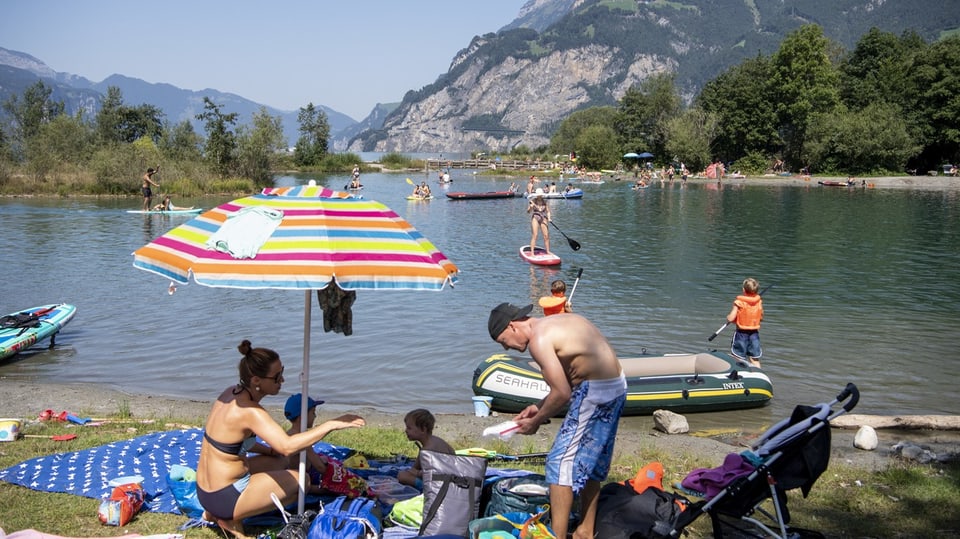The heat continued to have a firm grip on Switzerland on Monday. SRF Meteo forecast temperatures of up to 35 degrees Celsius for several regions.
Road closed in Aargau
The heat also has consequences for traffic in the Aargau Jura: A connecting road over the Rotberg between the Aargau communities of Villigen and Mandach has been closed since Sunday evening, as the responsible regional police announced on Instagram. The older road surface becomes soft and slippery due to the heat, the cantonal building department confirms when asked by SRF.
The road will remain closed for a week. When the temperatures drop, the base also hardens again. A renovation of the road is planned anyway, the canton said. Such heat-sensitive coverings are otherwise more common on small side roads. The canton representative emphasizes that other traffic routes in the canton are therefore not endangered by the heat.
On Sunday, the maximum temperatures of over 36 degrees were measured in the late afternoon in Sion (VS) and Geneva. In Würenlingen, Aargau, the thermometer climbed to 35.1 degrees. It has never been so hot in Bern in the second half of August since measurements began in 1864. According to SRF Meteo, temperatures of up to 36 degrees were already registered on Saturday.
Hot start to school in several cantons
On Monday it was also very hot and sunny with mostly over 30 degrees. The start of school in several cantons, especially in western Switzerland with 36 degrees, took place during the ongoing heat wave.
How will the weather be in the coming days?
In Neuchâtel, around 20,000 schoolchildren had already returned to their classrooms on August 14th. The Neuchâtel Canton Office for Primary Education is therefore offering its schools a range of measures to adapt to the heat wave, for example. However, heat holidays are not considered.
In a document sent to schools, the Office reminds schools of the need to ventilate buildings very early in the morning, to ask students to drink regularly and to provide them with water.
Cooling off not expected until Thursday
Several cities and cantons in western Switzerland have also activated heat wave plans. The Ministry of Health and Social Affairs in Lausanne warned, for example, to protect yourself from the heat and drink enough fluids; physical exertion should also be avoided and the body and home should be kept as cool as possible.
Legend:
People enjoy the hot summer weather on the islands in the Reuss delta on Lake Uri in the canton of Uri.
Keystone/Urs Flüeler
Due to the high temperatures, the risk of forest fires is also increasing in several regions. According to the Federal Office for the Environment (FOEN), the highest forest fire risk level applies in parts of the canton of Valais. Alertswiss issued a forest fire warning for parts of the canton of Geneva last Thursday.
In the canton of Friborg there is a fire ban in the forests from Tuesday afternoon. The authorities are reacting to the increasing risk of forest fires, as they announced. The forest soils are dry, wrote the Office for Forests and Nature. The risk of forest fires has reached the second highest level with 4.
According to SRF Meteo, cooling and thunderstorms should not occur until next Thursday. Nevertheless, late Sunday afternoon over the Jura, according to SRF Meteo, “somewhat surprisingly” there was still a thunderstorm.
